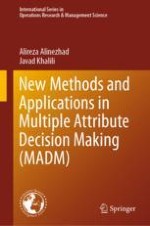This book presents 27 methods of the Multiple Attribute Decision Making (MADM), which are not discussed in the existing books, nor studied in details, using more applications. Nowadays, decision making is one of the most important and fundamental tasks of management as an organizational goal achievement that depends on its quality. Decision making includes the correct expression of objectives, determining different and possible solutions, evaluating their feasibility, assessing the consequences, and the results of implementing each solution, and finally, selecting and implementing the solution. Multiple Criteria Decision Making (MCDM) is sum of the decision making techniques. MCDM is divided into the Multiple Objective Decision Making (MODM) for designing the best solution and MADM for selecting the best alternative. Given that the applications of MADM are mostly more than MODM, wide various techniques have been developed for MADM by researchers over the last 60 years, and the current book introduces some of the other new MADM methods.
